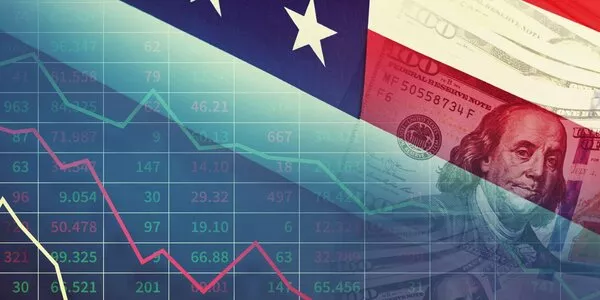
Weekly Update - The ECB can cut rates before (or without) the Fed
Yesterday's ECB meeting brought no big surprises. The Bank left rates unchanged but confirmed the conditions to cut rates were almost met. Ruling out last minute hitches, the first rate cut should come in June - whether or not the Fed cuts this summer. However, the ECB is likely to tread carefully, cutting rates just three times in 2024, to make sure inflation is on a sustainable move towards its target while the economy has avoided recession and the labour market remains tight. A weaker euro could also reduce the need for rate cuts.
Heading for a June cut. ECB president Christine Lagarde didn’t want to pre-commit on the decision for the next meeting but made it clear a June cut was on the cards. This would depend on greater confidence that inflation is heading back to 2%, based on future data and the next ECB forecasts due out in June. Beyond June, the ECB would not pre-commit either. Ms. Lagarde repeated that the ECB will remain data-dependent. The Bank also stressed that “The Governing Council’s future decisions will ensure that its policy rates will be set at sufficiently restrictive levels for as long as necessary.”
Three cuts in 2024. In our view, the ECB is set to cut rates no more than three times in 2024 - markets are pricing in three to four cuts. There are many arguments for a modest pace of rate cuts.
No recession. Unlike previous cycles of rate cuts in 2001, 2008 and 2011, the euro area economy is not facing a sharp contraction. Leading indicators have pick up recently, pointing to a rebound in the second half of the year. So, in easing its monetary policy the ECB, like the Fed and the Bank of England, will not be seeking to avoid or mitigate a recession but rather to shift monetary policy back into a more normal gear now that inflation is slowing.
Caution on inflation. The ECB will want to make sure the easing in inflation is well entrenched. However, looking at the United States (see our comment on US inflation below) or even Spain (where inflation has spiked from 1.9% year-on-year last June to 3.2% this March) may warrant caution. All the more so as some measures of underlying inflation have ticked up lately, including the super-core inflation rate which strips out non-cyclical price categories.
Weak productivity. Wage growth may have slowed but it is still high, amid scant signs of improving productivity. This effectively drives up unit wage costs and hence medium-term risks to inflation. That said, the ECB notes that “companies are absorbing part of the increase in labour costs through their profit margins.”
The euro question. Besides economic, geopolitical and inflation considerations, the ECB also needs to take into account the euro exchange rate. Given recent uncertainty about the Fed's monetary policy, the ECB will want to avoid any overly sharp drop in the euro and hence it will want to cut rates at a moderate pace. That said, a modest fall in the euro would not necessarily be seen as bad news by the ECB, as it would be a back route to looser monetary conditions.
In the highlights of the week, we chose to talk about inflation data in the United States as well as in China:
US inflation rebounded for the third month in a row in March, coming in at 3.5% yoy after 3.2% and against 3.4% expected by the consensus. Monthly inflation also remained strong, rising by 0.4% for the second month in a row. Core inflation remained at February’s level of 3.8% yoy, whereas the market was expecting a slowdown to 3.7%. The main drivers of inflation continue to be the prices of services, driven by both housing and non-housing services (notably car and home insurance premiums). Conversely, the producer price index came in below expectations, rising by 0.2% over the month, compared with the 0.3% expected after February’s 0.6% rise, pointing to a moderate rise in the PCE. Expectations of a Fed rate cut fell sharply over the week, with the probability of a rate cut in June dropping from around 50% to 22%, compared with 70% in March.
In contrast to the United States, inflation in China remains low and well below expectations, at 0.1% year-over-year in March against expectations of 0.4%, after a rebound to 0.7% linked to the Lunar New Year the previous month. Meanwhile, the producer price index remained in deflation (-2.8% year-on-year) for the 18th consecutive month. These data illustrate the weakness of domestic demand in China, while foreign trade data also disappointed (exports down 7.5% year-on-year in March).




